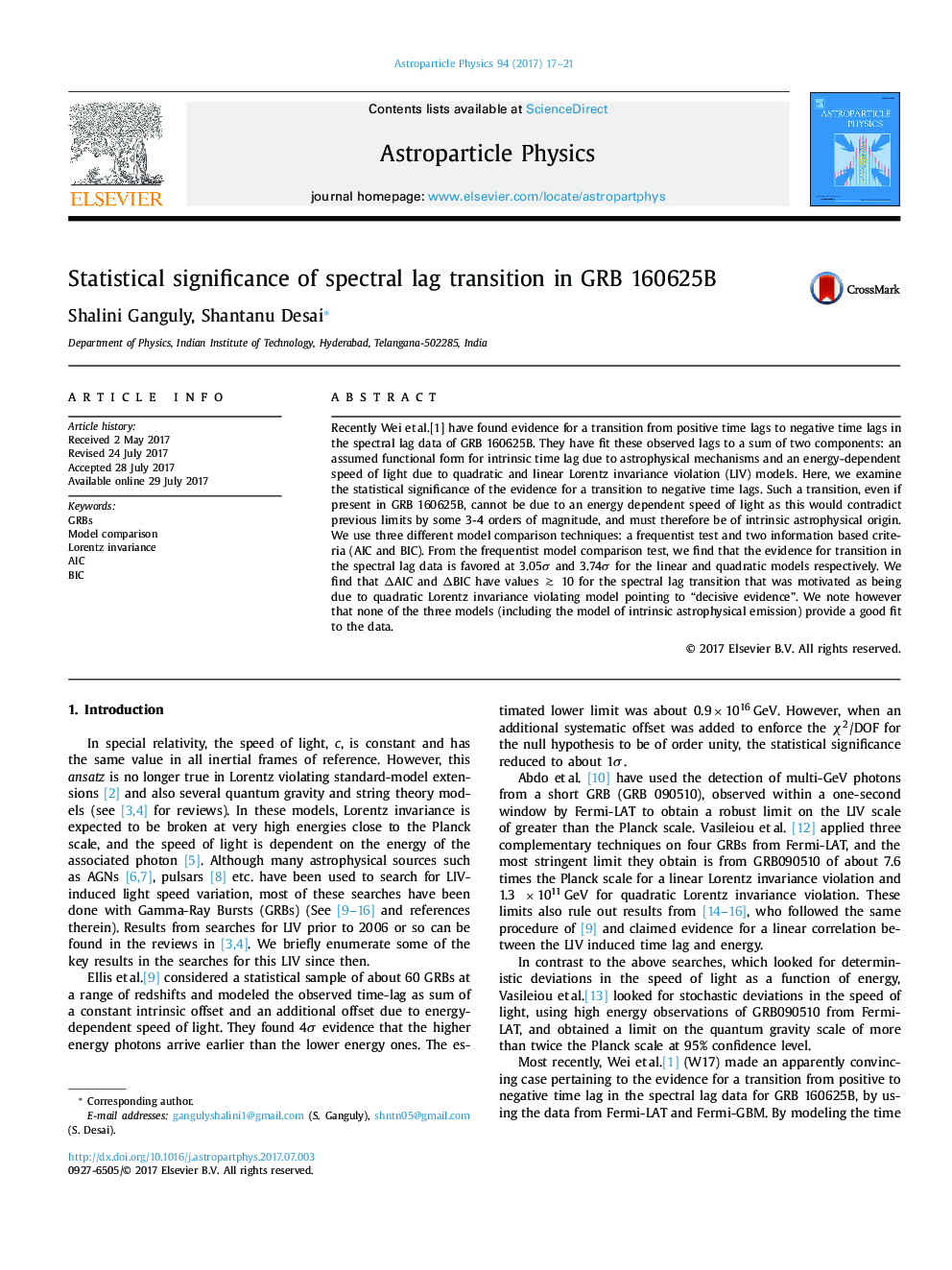| Article ID | Journal | Published Year | Pages | File Type |
|---|---|---|---|---|
| 5486709 | Astroparticle Physics | 2017 | 5 Pages |
Recently Wei etâ¯al.[1] have found evidence for a transition from positive time lags to negative time lags in the spectral lag data of GRB 160625B. They have fit these observed lags to a sum of two components: an assumed functional form for intrinsic time lag due to astrophysical mechanisms and an energy-dependent speed of light due to quadratic and linear Lorentz invariance violation (LIV) models. Here, we examine the statistical significance of the evidence for a transition to negative time lags. Such a transition, even if present in GRB 160625B, cannot be due to an energy dependent speed of light as this would contradict previous limits by some 3-4 orders of magnitude, and must therefore be of intrinsic astrophysical origin. We use three different model comparison techniques: a frequentist test and two information based criteria (AIC and BIC). From the frequentist model comparison test, we find that the evidence for transition in the spectral lag data is favored at 3.05Ï and 3.74Ï for the linear and quadratic models respectively. We find that ÎAIC and ÎBIC have values â¯â³â¯ 10 for the spectral lag transition that was motivated as being due to quadratic Lorentz invariance violating model pointing to “decisive evidence”. We note however that none of the three models (including the model of intrinsic astrophysical emission) provide a good fit to the data.
